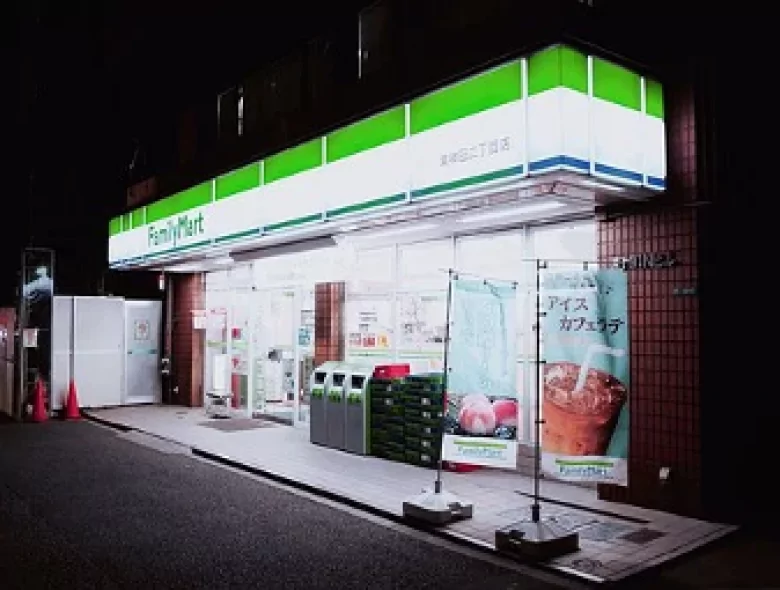If you travel anywhere in the world you will find that convenience stores will be common, no matter what form they take. In our article, we look at the similarities and differences between stores from Japan and the US.
When you travel the world and visit other countries, you will find that they all share some things. One of the most common things they may share would be convenience stores. They take different shapes or carry different items, but the core of the store will remain the same no matter where you go. In Japan, the “convenience” in “convenience store” is taken to a different level. We will compare Japanese convenience stores to their western counterparts in the US to see how different the same kind of store can be.

Japan’s Way
When first looking at the two countries’ convenience stores, you have to look at the countries they preside in. Japan has a certain way of placing its stores and it makes sense that they do it the way they do. Japan has all their stores completely separated by item type. For example, if you want medicine you go to the drugstore which has a few food items but is mostly for things like medicine, health care products, cleaning products, and hygiene items.
If you go to the convenience store in Japan, or as they call them konbinis, you are there for snacks, drinks, and other small things.
The US version will always have a gas station or pumps attached to it. The state and local areas determine any other extras that the store may have for customers to use. Some will have a full restaurant built into them while others focus on souvenirs and small electronics. Japan konbinis will all do the same thing with few having extra services or items.

Similarities
Let’s look at what things are similar between the two countries’ shops.
- Both are centered around a grab and go mentality. They are meant for a fast shopping experience to get whatever you need and be on your way. A large offering of snacks, drinks, and small personal hygiene items are usually found in both kinds of stores.
- There is usually a rest area or the ability to take a small respite from traveling or doing daily tasks. It is more likely to find rest areas in Japanese stores than the US, but they both have them in most stores.
- Restrooms and lavatories available to the public is another feature common to both stores. Sometimes in the US, there will be a store policy that requires a person to purchase something before being allowed to use the facilities.
- They are both placed in the most opportunistic spots to fill the need of any people nearby.
- There are some of the same chain brand convenience stores in Japan and the US, such as Seven-Eleven and Circle K.

Differences
Now, we will look at the biggest differences between the two stores.
- Every convenience store in Japan allows you to pay your bills at the store. You simply bring the bill with the barcode on it to the store. You scan it and can pay in cash and receive a stamped receipt of payment for your records.
- Almost all konbinis are open 24 hours a day in Japan. The stores in the US will usually close at late night, aside from some stores like Seven-Eleven.
- Most US stores always have a gas area attached to it. You will rarely see a convenience store without gas pumps. In Japan, there are two stores for this, and you will usually find them close to each other with the konbini on one side of the street and the gas station on the other side.
- Every Japanese konbini has grocery aisle and makes take away meals. You will always see pasta plates, sandwiches, fried foods, and some basic groceries at any store you will go to. They even have local produce from the area for a decent price.
- You can have your Amazon packages delivered and held at konbinis in Japan. There is an option for people to have their parcels delivered to a nearby participating store, and they will hold the package for up to 5 days.
- There is usually an extra holding fee attached to the service, but it is helpful for those with a busy schedule.
In Japan, it is difficult to find trash cans for your unwanted refuse. Konbinis are generally the only places you will find trash bins for people to throw away their trash.
Japan is still a mostly cash-based society and has recently made it easier to use credit cards to pay for your items. Pasmo/Suica cards that you normally use for the train are also accepted at convenience stores. Vending machines also allow for Suica payments for the most part.
It is easy to see that both stores have their advantages and disadvantages. They are both focused on offering customers a quick and easy way to get some refreshments and be on their way. The Japanese stores have taken certain aspects of their western counterparts and focused on a few areas. It is interesting to see the changes they have made, and the stores are always a treat for travelers to experience. If you find yourself in Japan, you should try to see the differences in the stores there compared to the stores from your own country.



